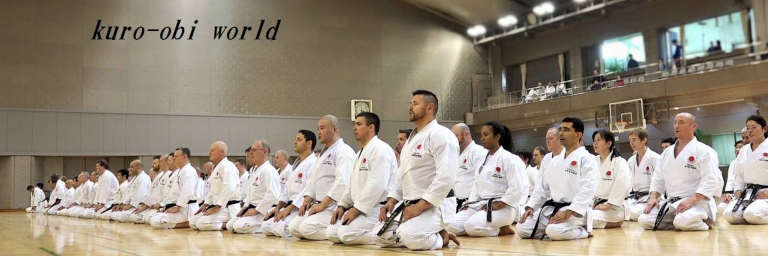Where karate really comes from…
By Mr. Nakahara Nobuyuki, chairman of JKA.
Long ago, in 520 AD, a famous Indian Buddhist by the name of Bodhi-dharma traveled to China, sat in meditation facing a temple wall for nine straight years, and finally attained spiritual enlightenment.
He then created Zen Buddhism in China. And to strengthen his dis-ciples and monks he taught them a primitive, prototypical form of a‘bare-handed, bare-footed’ martial art which he had brought with him from India.
For a thousand years that martial art developed and flourished in China. And then in the middle ages it was brought to Okinawa—in the Ryukyu Islands just east across the China Sea. There it merged with the indige-nous bare-handed fighting style known as Te (‘Hand’), to eventually become Kara-Te (‘China-Hand’).
Many masters of Kara-Te (karate) appeared in the Ryukyu Islands in the next few hundred years. And finally, early in the 20th century, one of them, Supreme Master Funakoshi Gichin (1868-1957), brought what he thought was the most perfect form of the art north to central Japan.
He Became the Heart of the JKA
Master Funakoshi was a man of extraordinary spirit and force, the one who introduced karate, which today is often described as ‘Zen in motion,’ to the world.
He was also the one who changed the character for kara in karate from China (‘China’)* to another character whose reading is exactly the same but whose meaning is very different: Emptiness (‘emptiness;’ the central philosophi-cal insight of Buddhism).
*(‘Kara,’ a name which specifically refers to the Tang Dynasty [617-908 AD] was until the early decades of the 20th century the popular name for ‘China’ in Japan.)
It was he who became the heart of the JKA—the one around whom, more than half a century ago, the organization was formed. And it is to his spirit, and his teaching, that the JKA will forever remain true.
The JKA is the Keeper of Karate’s Highest Tradition, the teacher of the art in its purest form. There are literally hundreds of schools of karate in Japan and around the world, but none is like the JKA. None teaches karate in quite the same way. #jka #sajka

